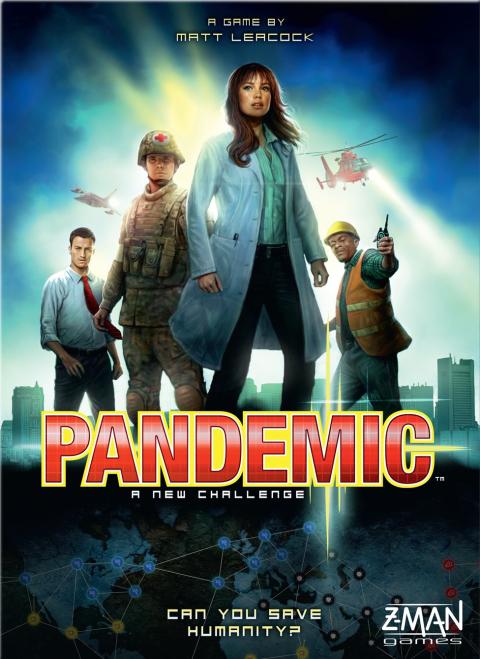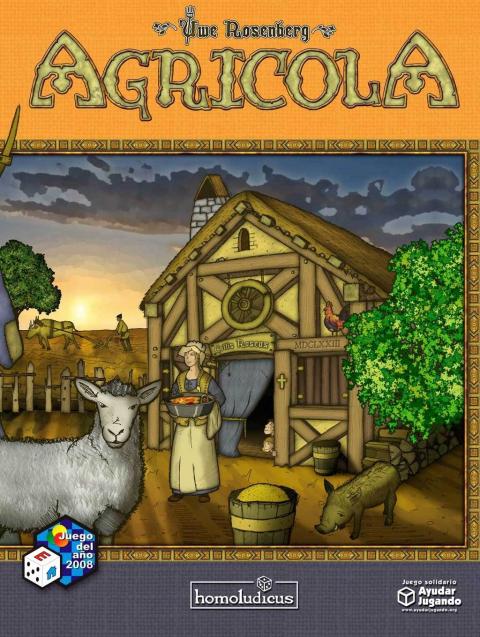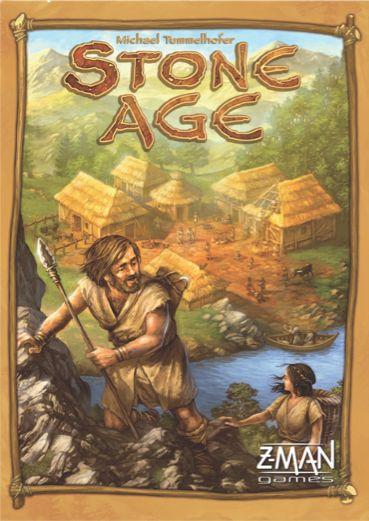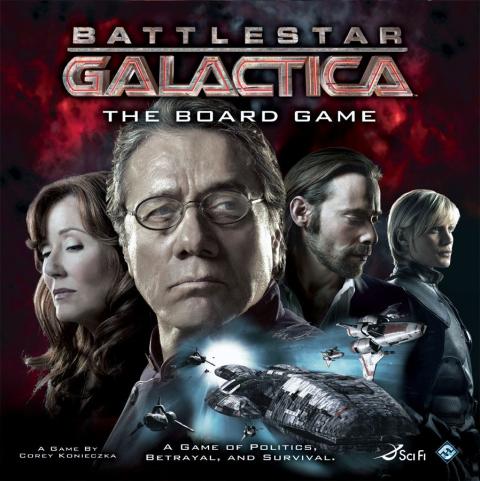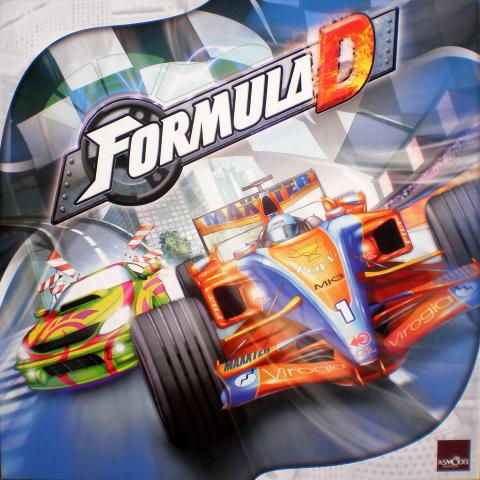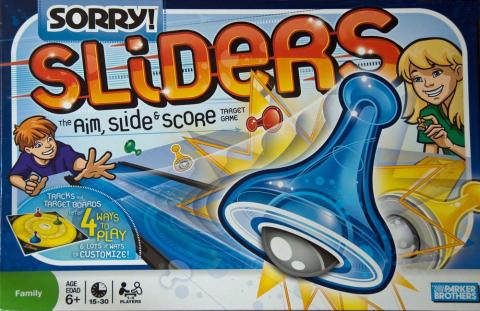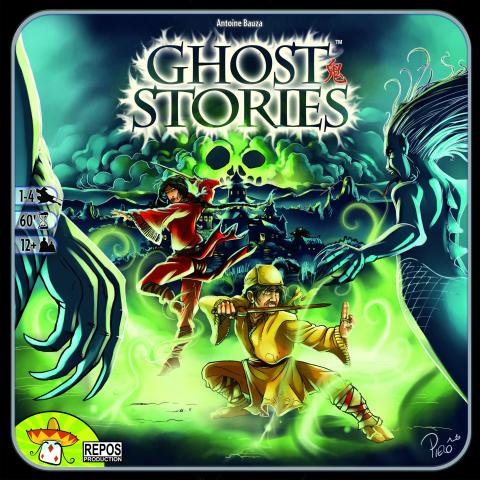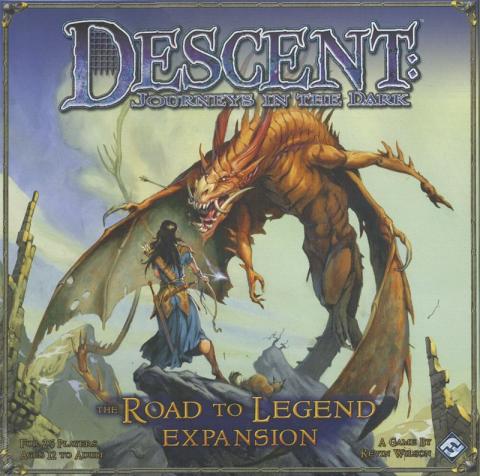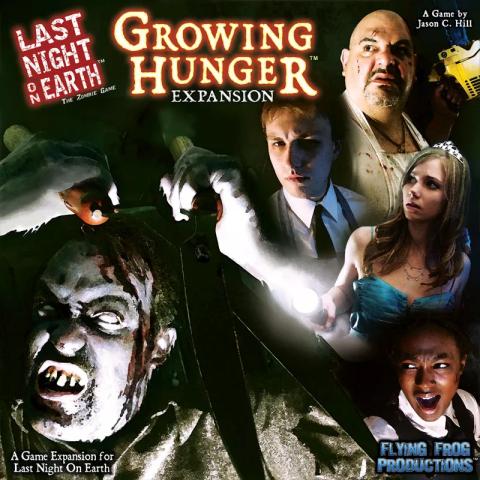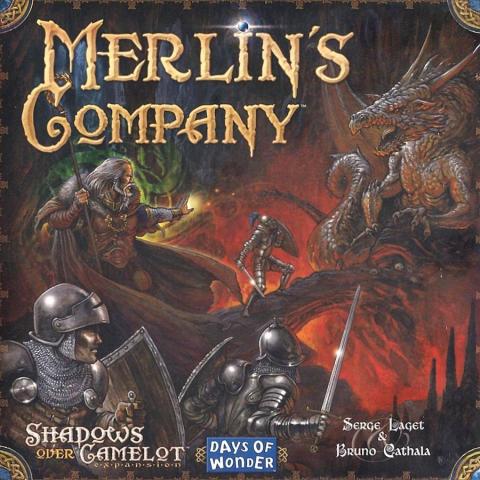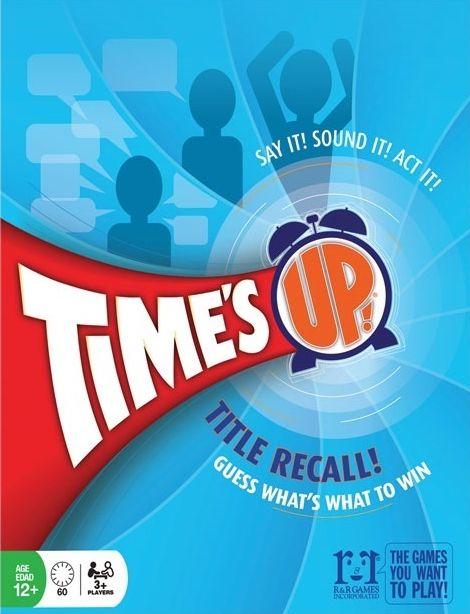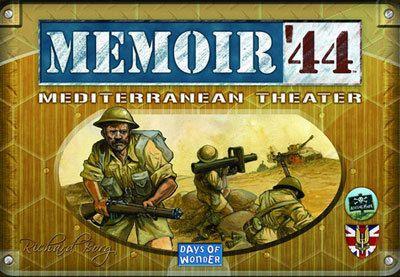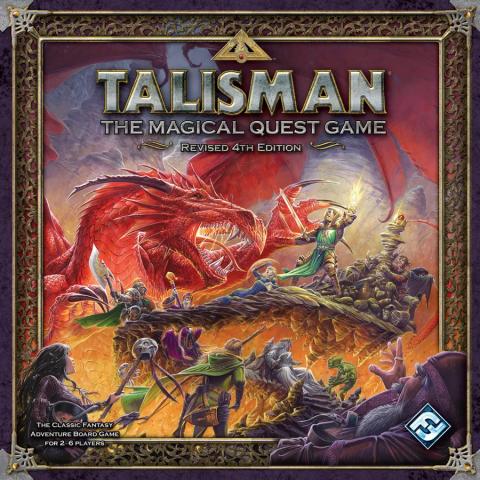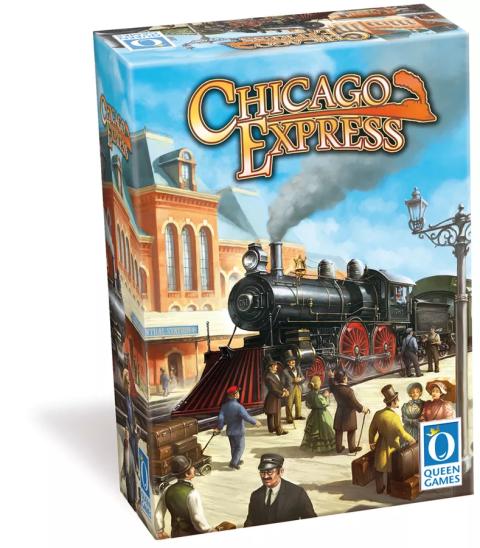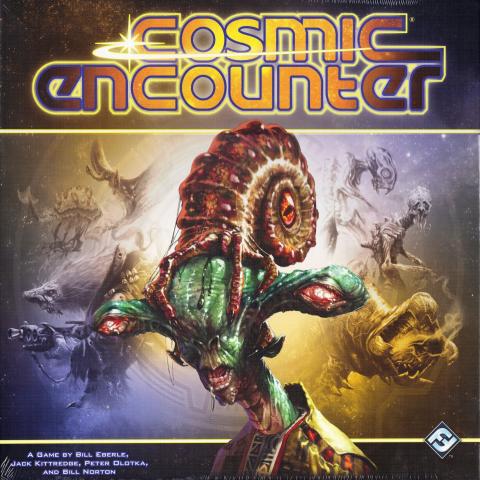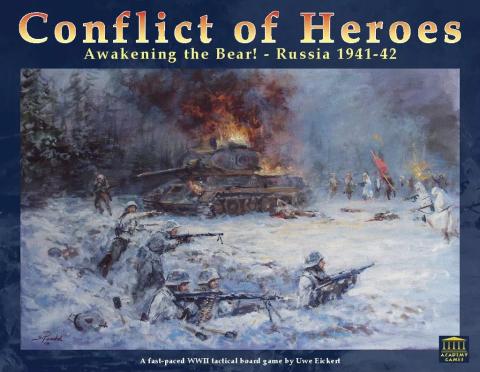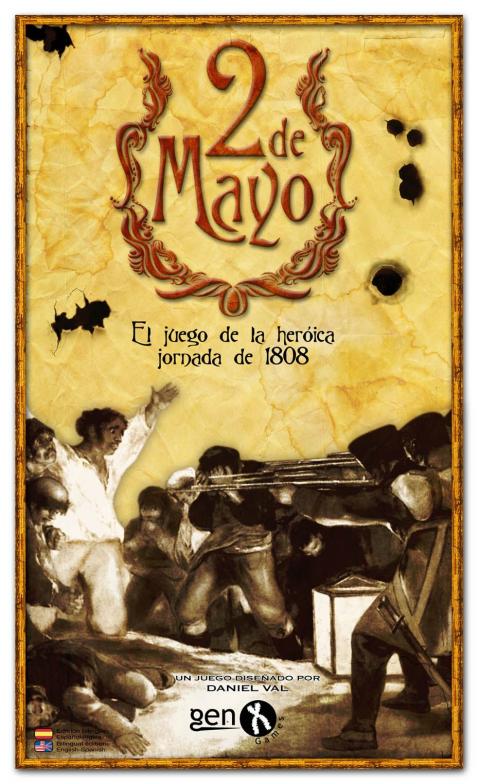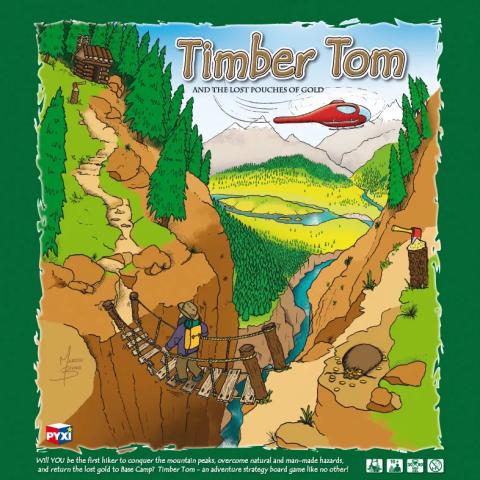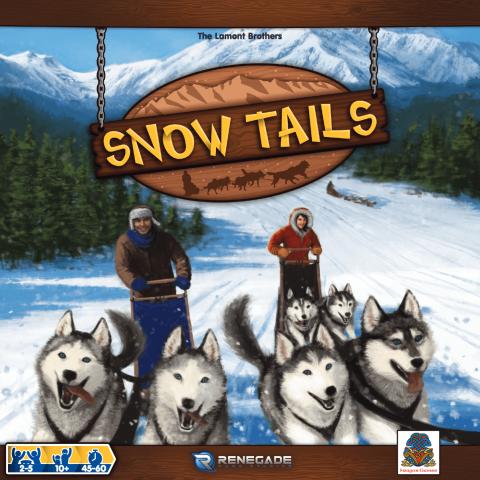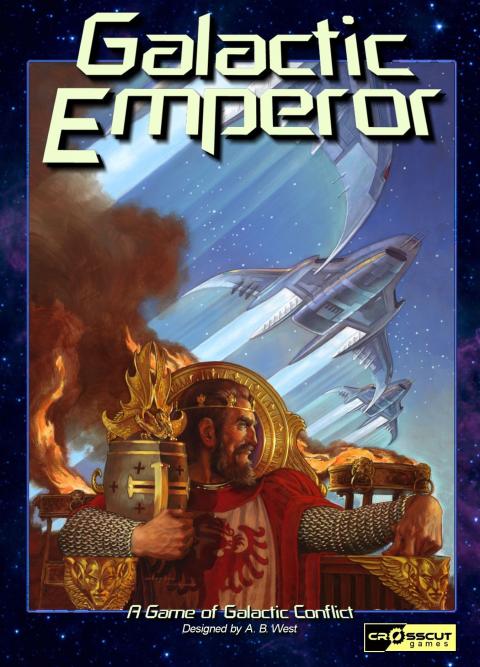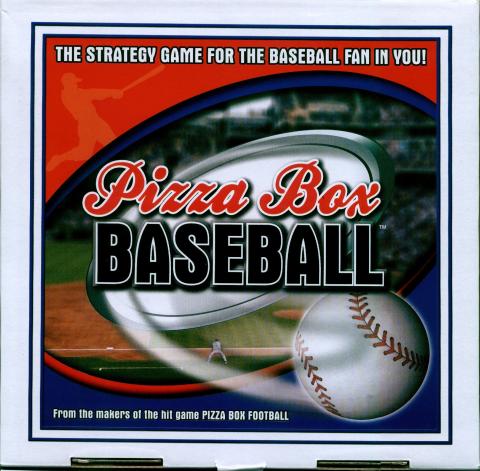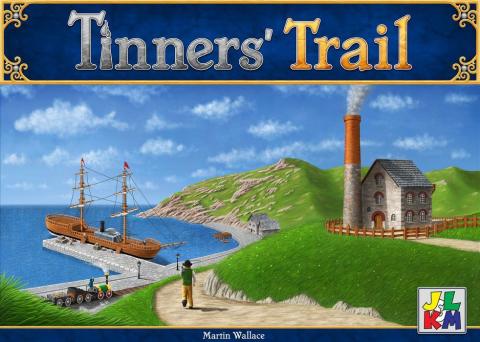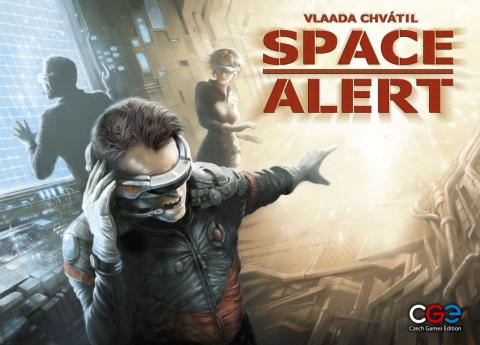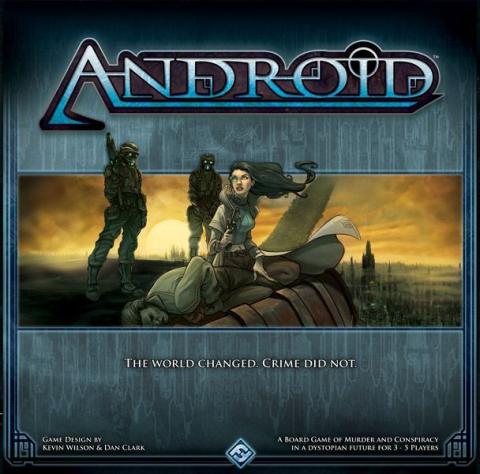Presenting the nominees of the second annual Dice Tower Awards for games released in 2008 in categories including artwork, small publisher, new designer, and the game of the year!
Game of the Year

"You are a monarch, like your parents before you, a ruler of a small pleasant kingdom of rivers and evergreens. Unlike your parents, however, you have hopes and dreams! You want a bigger and more pleasant kingdom, with more rivers and a wider variety of trees. You want a Dominion! In all directions lie fiefs, freeholds, and feodums. All are small bits of land, controlled by petty lords and verging on anarchy. You will bring civilization to these people, uniting them under your banner.
But wait! It must be something in the air; several other monarchs have had the exact same idea. You must race to get as much of the unclaimed land as possible, fending them off along the way. To do this you will hire minions, construct buildings, spruce up your castle, and fill the coffers of your treasury. Your parents wouldn't be proud, but your grandparents, on your mother's side, would be delighted."
—description from the back of the box
In Dominion, each player starts with an identical, very small deck of cards. In the center of the table is a selection of other cards the players can "buy" as they can afford them. Through their selection of cards to buy, and how they play their hands as they draw them, the players construct their deck on the fly, striving for the most efficient path to the precious victory points by game end.
Dominion is not a CCG, but the play of the game is similar to the construction and play of a CCG deck. The game comes with 500 cards. You select 10 of the 25 Kingdom card types to include in any given play—leading to immense variety.
—user summary
Part of the Dominion series.
But wait! It must be something in the air; several other monarchs have had the exact same idea. You must race to get as much of the unclaimed land as possible, fending them off along the way. To do this you will hire minions, construct buildings, spruce up your castle, and fill the coffers of your treasury. Your parents wouldn't be proud, but your grandparents, on your mother's side, would be delighted."
—description from the back of the box
In Dominion, each player starts with an identical, very small deck of cards. In the center of the table is a selection of other cards the players can "buy" as they can afford them. Through their selection of cards to buy, and how they play their hands as they draw them, the players construct their deck on the fly, striving for the most efficient path to the precious victory points by game end.
Dominion is not a CCG, but the play of the game is similar to the construction and play of a CCG deck. The game comes with 500 cards. You select 10 of the 25 Kingdom card types to include in any given play—leading to immense variety.
—user summary
Part of the Dominion series.
Year Published:
2008
Designers:
Donald X. Vaccarino
Publishers:
Rio Grande Games
Best Family Game

Formula D is a high stakes Formula One type racing game where the players race simulated cars with the hope of crossing the finish line first. This is a re-release of Formula Dé with several changes from the original format. Whilst old tracks can be used with the updated Formula D rules, the new game features boards that have an F1 track and a Street Track on the other side. These street tracks each have a novel inclusion or two to add greater theme -
The game mechanisms are a simple race, get to the finish line first! However, players have to use a significant amount of planning, and rely on quite a bit of luck. Each player manages when to shift gears, with each gear providing a different speed. (For example, 4th gear is a die that rolls random numbers from 7 to 12 for spaces moved.) Each turn, players may move up one gear, stay in that gear, or move down gears. This forces players to match possible rolls with the optimum distance for that turn, and hopefully plan ahead. However, speed is not the only issue! Corners have a "stop" rule that requires players to stop once, twice, or three times on that corner in consecutive turns or face a penalty. This creates an effective speed limit to the corners.
Of course, things do not always go as planned! Players take penalties if they miss their roll, bump into another car, are blocked by other cars, have to brake heavily, or have to downshift several gears. These are taken off of a car’s attributes (Tire health, Brake wear, Transmission Gears, Body, engine, and Suspension). Losing the maximum in any of these categories will result in elimination, or a severe setback for that car. This requires that players manage their car’s health, plan for their best path, and have good luck on their rolls. This high amount of luck gives the game its family appeal, and lets weaker players have a chance at winning once in a while.
However, the fun does not end with a single race! The rules include the ability to customize your cars, use a pre-generated character, add Slipstreaming (Drafting) rules and road debris, and change tire types to modify your distance rolls. There are also variations for a single lap race, or multiple laps with pit stops to repair some of your damage points. In addition, numerous expansion tracks can be purchased to vary the demands on each driver and car. Each track may also have weather effects (rain) that change car handling and die rolls due to skidding on wet track. This opens up the game for rally rules giving championship points over a number of races.
Formula D adds a few items that are not in the original Formula De: There is the added excitement of illegal racing in the streets of big cities - anything goes! This adds custom cars, nitro acceleration, drifting in the curves, dirty tricks, gun battles, and trash on the road to add more variation. A basic change is the use of a "Dashboard" with movable pegs to manage your car’s attributes instead of the paper forms from Formula De. There are also two sets of pre-painted cars; a Formula 1 set and the Street Race set of stock cars. The street cars come with "Character" profiles to give a bit of role-playing to the game. Finally, the old category of "Fuel" for the car has been renamed Transmission Wear to give a better thematic fit to the effect of multiple downshifting.
The popularity of this game has given it a lot of expansions, some simplifications to the rules (See Formula Dé Mini), and a lot of "after market" parts. There are also fan expansions and tracks for the very dedicated player. In many ways, this has become a multiple game system.
The game mechanisms are a simple race, get to the finish line first! However, players have to use a significant amount of planning, and rely on quite a bit of luck. Each player manages when to shift gears, with each gear providing a different speed. (For example, 4th gear is a die that rolls random numbers from 7 to 12 for spaces moved.) Each turn, players may move up one gear, stay in that gear, or move down gears. This forces players to match possible rolls with the optimum distance for that turn, and hopefully plan ahead. However, speed is not the only issue! Corners have a "stop" rule that requires players to stop once, twice, or three times on that corner in consecutive turns or face a penalty. This creates an effective speed limit to the corners.
Of course, things do not always go as planned! Players take penalties if they miss their roll, bump into another car, are blocked by other cars, have to brake heavily, or have to downshift several gears. These are taken off of a car’s attributes (Tire health, Brake wear, Transmission Gears, Body, engine, and Suspension). Losing the maximum in any of these categories will result in elimination, or a severe setback for that car. This requires that players manage their car’s health, plan for their best path, and have good luck on their rolls. This high amount of luck gives the game its family appeal, and lets weaker players have a chance at winning once in a while.
However, the fun does not end with a single race! The rules include the ability to customize your cars, use a pre-generated character, add Slipstreaming (Drafting) rules and road debris, and change tire types to modify your distance rolls. There are also variations for a single lap race, or multiple laps with pit stops to repair some of your damage points. In addition, numerous expansion tracks can be purchased to vary the demands on each driver and car. Each track may also have weather effects (rain) that change car handling and die rolls due to skidding on wet track. This opens up the game for rally rules giving championship points over a number of races.
Formula D adds a few items that are not in the original Formula De: There is the added excitement of illegal racing in the streets of big cities - anything goes! This adds custom cars, nitro acceleration, drifting in the curves, dirty tricks, gun battles, and trash on the road to add more variation. A basic change is the use of a "Dashboard" with movable pegs to manage your car’s attributes instead of the paper forms from Formula De. There are also two sets of pre-painted cars; a Formula 1 set and the Street Race set of stock cars. The street cars come with "Character" profiles to give a bit of role-playing to the game. Finally, the old category of "Fuel" for the car has been renamed Transmission Wear to give a better thematic fit to the effect of multiple downshifting.
The popularity of this game has given it a lot of expansions, some simplifications to the rules (See Formula Dé Mini), and a lot of "after market" parts. There are also fan expansions and tracks for the very dedicated player. In many ways, this has become a multiple game system.
Year Published:
2008
Designers:
Laurent Lavaur
Publishers:
Asmodee
Best Artwork
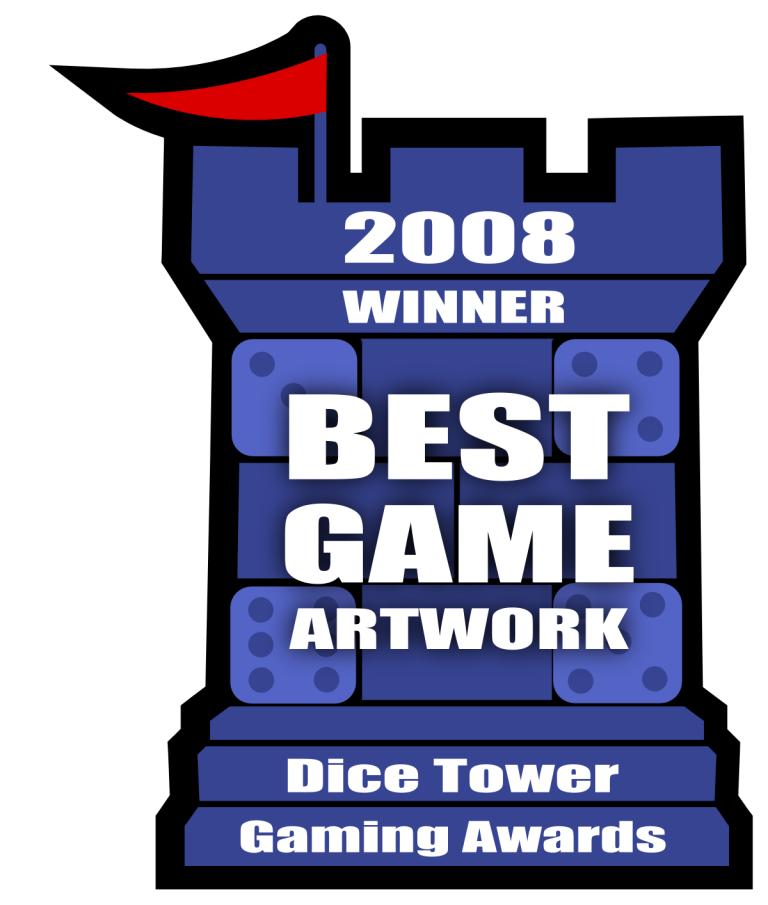
Battlestar Galactica: The Board Game is an exciting game of mistrust, intrigue, and the struggle for survival. Based on the epic and widely-acclaimed Sci Fi Channel series, Battlestar Galactica: The Board Game puts players in the role of one of ten of their favorite characters from the show. Each playable character has their own abilities and weaknesses, and must all work together in order for humanity to have any hope of survival. However, one or more players in every game secretly side with the Cylons. Players must attempt to expose the traitor while fuel shortages, food contaminations, and political unrest threatens to tear the fleet apart.
After the Cylon attack on the Colonies, the battered remnants of the human race are on the run, constantly searching for the next signpost on the road to Earth. They face the threat of Cylon attack from without, and treachery and crisis from within. Humanity must work together if they are to have any hope of survival…but how can they, when any of them may, in fact, be a Cylon agent?
Battlestar Galactica: The Board Game is a semi-cooperative game for 3-6 players ages 10 and up that can be played in 2-3 hours. Players choose from pilots, political leaders, military leaders, or engineers to crew Galactica. They are also dealt a loyalty card at the start of the game to determine if they are a human or Cylon along with an assortment of skill cards based on their characters abilities. Players then can move and take actions either on Galactica, on Colonial 1, or in a Viper. They need to collect skill cards, fend off Cylon ships, and keep Galactica and the fleet jumping. Each turn also brings a Crisis Card, various tasks that players must overcome. Players need to play matching skill cards to fend off the problems; skill cards that don't match hinder the players success. Fate could be working against the crew, or there could be a traitorous Cylon! As players get closer and closer towards reaching their Earth, another round of loyalty cards are passed out and more Cylons may turn up. If players can keep their up their food stores, fuel levels, ship morale, and population, and they can keep Galactica in one piece long enough to make it to Earth, the Humans win the game. But if the Cylon players reveal themselves at the right moment and bring down Galactica, the Humans have lost.
Official Site, Rules & FAQ: http://www.fantasyflightgames.com/edge_minisite_sec.asp?eidm=18&esem=4
Unofficial FAQ for really tricky questions: http://boardgamegeek.com/wiki/page/Battlestar_Galactica_FAQ
After the Cylon attack on the Colonies, the battered remnants of the human race are on the run, constantly searching for the next signpost on the road to Earth. They face the threat of Cylon attack from without, and treachery and crisis from within. Humanity must work together if they are to have any hope of survival…but how can they, when any of them may, in fact, be a Cylon agent?
Battlestar Galactica: The Board Game is a semi-cooperative game for 3-6 players ages 10 and up that can be played in 2-3 hours. Players choose from pilots, political leaders, military leaders, or engineers to crew Galactica. They are also dealt a loyalty card at the start of the game to determine if they are a human or Cylon along with an assortment of skill cards based on their characters abilities. Players then can move and take actions either on Galactica, on Colonial 1, or in a Viper. They need to collect skill cards, fend off Cylon ships, and keep Galactica and the fleet jumping. Each turn also brings a Crisis Card, various tasks that players must overcome. Players need to play matching skill cards to fend off the problems; skill cards that don't match hinder the players success. Fate could be working against the crew, or there could be a traitorous Cylon! As players get closer and closer towards reaching their Earth, another round of loyalty cards are passed out and more Cylons may turn up. If players can keep their up their food stores, fuel levels, ship morale, and population, and they can keep Galactica in one piece long enough to make it to Earth, the Humans win the game. But if the Cylon players reveal themselves at the right moment and bring down Galactica, the Humans have lost.
Official Site, Rules & FAQ: http://www.fantasyflightgames.com/edge_minisite_sec.asp?eidm=18&esem=4
Unofficial FAQ for really tricky questions: http://boardgamegeek.com/wiki/page/Battlestar_Galactica_FAQ
Year Published:
2008
Designers:
Corey Konieczka
Publishers:
Fantasy Flight Games
Best Expansion

In the dark and secret parts of the world, foul Overlords plot and scheme to unleash great evil and cover the world in suffering. Only those Heroes brave enough to journey into the dark and oppose them can save the known world from disaster.
The Road to Legend represents a new way to play Descent with the introduction of campaign rules and an overland map of Terrinoth.
The Road to Legend represents a new way to play Descent with the introduction of campaign rules and an overland map of Terrinoth.
Year Published:
2008
Designers:
Robert A. Kouba
Publishers:
Fantasy Flight Games
Best Reprint

Formula D is a high stakes Formula One type racing game where the players race simulated cars with the hope of crossing the finish line first. This is a re-release of Formula Dé with several changes from the original format. Whilst old tracks can be used with the updated Formula D rules, the new game features boards that have an F1 track and a Street Track on the other side. These street tracks each have a novel inclusion or two to add greater theme -
The game mechanisms are a simple race, get to the finish line first! However, players have to use a significant amount of planning, and rely on quite a bit of luck. Each player manages when to shift gears, with each gear providing a different speed. (For example, 4th gear is a die that rolls random numbers from 7 to 12 for spaces moved.) Each turn, players may move up one gear, stay in that gear, or move down gears. This forces players to match possible rolls with the optimum distance for that turn, and hopefully plan ahead. However, speed is not the only issue! Corners have a "stop" rule that requires players to stop once, twice, or three times on that corner in consecutive turns or face a penalty. This creates an effective speed limit to the corners.
Of course, things do not always go as planned! Players take penalties if they miss their roll, bump into another car, are blocked by other cars, have to brake heavily, or have to downshift several gears. These are taken off of a car’s attributes (Tire health, Brake wear, Transmission Gears, Body, engine, and Suspension). Losing the maximum in any of these categories will result in elimination, or a severe setback for that car. This requires that players manage their car’s health, plan for their best path, and have good luck on their rolls. This high amount of luck gives the game its family appeal, and lets weaker players have a chance at winning once in a while.
However, the fun does not end with a single race! The rules include the ability to customize your cars, use a pre-generated character, add Slipstreaming (Drafting) rules and road debris, and change tire types to modify your distance rolls. There are also variations for a single lap race, or multiple laps with pit stops to repair some of your damage points. In addition, numerous expansion tracks can be purchased to vary the demands on each driver and car. Each track may also have weather effects (rain) that change car handling and die rolls due to skidding on wet track. This opens up the game for rally rules giving championship points over a number of races.
Formula D adds a few items that are not in the original Formula De: There is the added excitement of illegal racing in the streets of big cities - anything goes! This adds custom cars, nitro acceleration, drifting in the curves, dirty tricks, gun battles, and trash on the road to add more variation. A basic change is the use of a "Dashboard" with movable pegs to manage your car’s attributes instead of the paper forms from Formula De. There are also two sets of pre-painted cars; a Formula 1 set and the Street Race set of stock cars. The street cars come with "Character" profiles to give a bit of role-playing to the game. Finally, the old category of "Fuel" for the car has been renamed Transmission Wear to give a better thematic fit to the effect of multiple downshifting.
The popularity of this game has given it a lot of expansions, some simplifications to the rules (See Formula Dé Mini), and a lot of "after market" parts. There are also fan expansions and tracks for the very dedicated player. In many ways, this has become a multiple game system.
The game mechanisms are a simple race, get to the finish line first! However, players have to use a significant amount of planning, and rely on quite a bit of luck. Each player manages when to shift gears, with each gear providing a different speed. (For example, 4th gear is a die that rolls random numbers from 7 to 12 for spaces moved.) Each turn, players may move up one gear, stay in that gear, or move down gears. This forces players to match possible rolls with the optimum distance for that turn, and hopefully plan ahead. However, speed is not the only issue! Corners have a "stop" rule that requires players to stop once, twice, or three times on that corner in consecutive turns or face a penalty. This creates an effective speed limit to the corners.
Of course, things do not always go as planned! Players take penalties if they miss their roll, bump into another car, are blocked by other cars, have to brake heavily, or have to downshift several gears. These are taken off of a car’s attributes (Tire health, Brake wear, Transmission Gears, Body, engine, and Suspension). Losing the maximum in any of these categories will result in elimination, or a severe setback for that car. This requires that players manage their car’s health, plan for their best path, and have good luck on their rolls. This high amount of luck gives the game its family appeal, and lets weaker players have a chance at winning once in a while.
However, the fun does not end with a single race! The rules include the ability to customize your cars, use a pre-generated character, add Slipstreaming (Drafting) rules and road debris, and change tire types to modify your distance rolls. There are also variations for a single lap race, or multiple laps with pit stops to repair some of your damage points. In addition, numerous expansion tracks can be purchased to vary the demands on each driver and car. Each track may also have weather effects (rain) that change car handling and die rolls due to skidding on wet track. This opens up the game for rally rules giving championship points over a number of races.
Formula D adds a few items that are not in the original Formula De: There is the added excitement of illegal racing in the streets of big cities - anything goes! This adds custom cars, nitro acceleration, drifting in the curves, dirty tricks, gun battles, and trash on the road to add more variation. A basic change is the use of a "Dashboard" with movable pegs to manage your car’s attributes instead of the paper forms from Formula De. There are also two sets of pre-painted cars; a Formula 1 set and the Street Race set of stock cars. The street cars come with "Character" profiles to give a bit of role-playing to the game. Finally, the old category of "Fuel" for the car has been renamed Transmission Wear to give a better thematic fit to the effect of multiple downshifting.
The popularity of this game has given it a lot of expansions, some simplifications to the rules (See Formula Dé Mini), and a lot of "after market" parts. There are also fan expansions and tracks for the very dedicated player. In many ways, this has become a multiple game system.
Year Published:
2008
Designers:
Laurent Lavaur
Publishers:
Asmodee
Best Game from a New Designer

"You are a monarch, like your parents before you, a ruler of a small pleasant kingdom of rivers and evergreens. Unlike your parents, however, you have hopes and dreams! You want a bigger and more pleasant kingdom, with more rivers and a wider variety of trees. You want a Dominion! In all directions lie fiefs, freeholds, and feodums. All are small bits of land, controlled by petty lords and verging on anarchy. You will bring civilization to these people, uniting them under your banner.
But wait! It must be something in the air; several other monarchs have had the exact same idea. You must race to get as much of the unclaimed land as possible, fending them off along the way. To do this you will hire minions, construct buildings, spruce up your castle, and fill the coffers of your treasury. Your parents wouldn't be proud, but your grandparents, on your mother's side, would be delighted."
—description from the back of the box
In Dominion, each player starts with an identical, very small deck of cards. In the center of the table is a selection of other cards the players can "buy" as they can afford them. Through their selection of cards to buy, and how they play their hands as they draw them, the players construct their deck on the fly, striving for the most efficient path to the precious victory points by game end.
Dominion is not a CCG, but the play of the game is similar to the construction and play of a CCG deck. The game comes with 500 cards. You select 10 of the 25 Kingdom card types to include in any given play—leading to immense variety.
—user summary
Part of the Dominion series.
But wait! It must be something in the air; several other monarchs have had the exact same idea. You must race to get as much of the unclaimed land as possible, fending them off along the way. To do this you will hire minions, construct buildings, spruce up your castle, and fill the coffers of your treasury. Your parents wouldn't be proud, but your grandparents, on your mother's side, would be delighted."
—description from the back of the box
In Dominion, each player starts with an identical, very small deck of cards. In the center of the table is a selection of other cards the players can "buy" as they can afford them. Through their selection of cards to buy, and how they play their hands as they draw them, the players construct their deck on the fly, striving for the most efficient path to the precious victory points by game end.
Dominion is not a CCG, but the play of the game is similar to the construction and play of a CCG deck. The game comes with 500 cards. You select 10 of the 25 Kingdom card types to include in any given play—leading to immense variety.
—user summary
Part of the Dominion series.
Year Published:
2008
Designers:
Donald X. Vaccarino
Publishers:
Rio Grande Games
Best Game from a Small Publisher

Snow Tails is set in the snowy world of the Arctic Circle, where brave sledders compete in a test of skill and endurance. Action is fast and furious and not all sleds may make it to the finish. Huskies only have one setting and that is full speed! Hang on to your furs, the reins, your sled and anything else you can get hold of.
The game contains modular track pieces which can be fitted together to form different courses. Players have their own Dog Decks which they draw from and play onto their sled mat. Movement is rarely in a straight line as the sled may drift left or right. Losing control or speeding into a corner results in Dent cards being acquired which will limit a player's hand size.
The game features a fun and original movement mechanism.
Game Summary
Race courses are built randomly. Players each have a dog sled with 2 dogs (initially valued 3 each) and a brake (also 3). Each player has the same deck of cards (5 sets of cards 1-5, shuffled) from which they draw a hand of 5 cards.
On your turn, may play 1-3 cards of the same value to these 3 locations (dog1, dog2, brakes). Forward speed (and distance moved) = dog1 + dog2 - brake + bonus (=position in race) if (dog1 = dog2). Lateral movement distance = dog1 - dog2 (move to the side with the stronger dog). Certain parts of the track have speed limits; you take damage if you exceed them, or if you run into obstacles (ice patches, side of track, etc.). Damage = cards that take up space in your hand (so 5th damage --> out of the race!).
The first player to cross the finish line wins!
The game contains modular track pieces which can be fitted together to form different courses. Players have their own Dog Decks which they draw from and play onto their sled mat. Movement is rarely in a straight line as the sled may drift left or right. Losing control or speeding into a corner results in Dent cards being acquired which will limit a player's hand size.
The game features a fun and original movement mechanism.
Game Summary
Race courses are built randomly. Players each have a dog sled with 2 dogs (initially valued 3 each) and a brake (also 3). Each player has the same deck of cards (5 sets of cards 1-5, shuffled) from which they draw a hand of 5 cards.
On your turn, may play 1-3 cards of the same value to these 3 locations (dog1, dog2, brakes). Forward speed (and distance moved) = dog1 + dog2 - brake + bonus (=position in race) if (dog1 = dog2). Lateral movement distance = dog1 - dog2 (move to the side with the stronger dog). Certain parts of the track have speed limits; you take damage if you exceed them, or if you run into obstacles (ice patches, side of track, etc.). Damage = cards that take up space in your hand (so 5th damage --> out of the race!).
The first player to cross the finish line wins!
Year Published:
2008
Designers:
Gordon Lamont
Publishers:
Fragor Games
Most Innovative Game

Space Alert is a cooperative team survival game. Players become crew members of a small spaceship scanning dangerous sectors of the galaxy. The missions last just 10 real-time minutes (hyperspace jump, sector scan, hyperspace jump back) and the only task the players have is to protect their ship.
During play, the central computer will announce the presence of various threats on one the supplied 10 minute soundtracks that also acts as a game timer. The threats vary from space battleships and interceptors to different interstellar monsters and abominations, asteroids or even intruders and malfunctions on the spaceship. Players have to agree who will take care of which task and coordinate their actions (moving around the ship, firing weapons, distributing energy, using battlebots to deal with intruders, launching guided missiles, etc.) in real time to defend the ship. Only a well-working team can survive 10 minutes and make the jump back to safety.
The game offers several difficulty levels, huge variability and a unique experience for one to five player teams. One mission lasts only about 30 minutes, including setup and evaluation.
(Based on a description from Czech Games Edition)
During play, the central computer will announce the presence of various threats on one the supplied 10 minute soundtracks that also acts as a game timer. The threats vary from space battleships and interceptors to different interstellar monsters and abominations, asteroids or even intruders and malfunctions on the spaceship. Players have to agree who will take care of which task and coordinate their actions (moving around the ship, firing weapons, distributing energy, using battlebots to deal with intruders, launching guided missiles, etc.) in real time to defend the ship. Only a well-working team can survive 10 minutes and make the jump back to safety.
The game offers several difficulty levels, huge variability and a unique experience for one to five player teams. One mission lasts only about 30 minutes, including setup and evaluation.
(Based on a description from Czech Games Edition)
Year Published:
2008
Designers:
Vlaada Chvátil
Publishers:
Czech Games Edition



